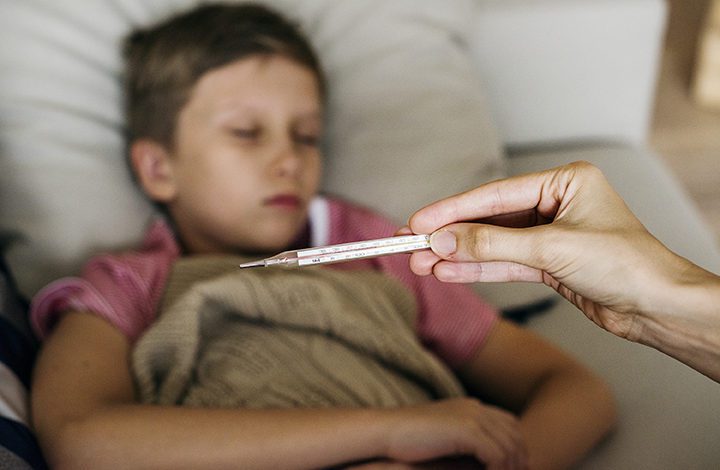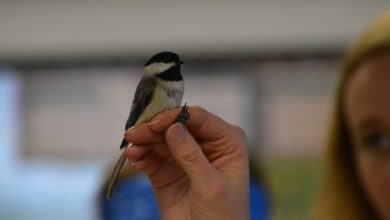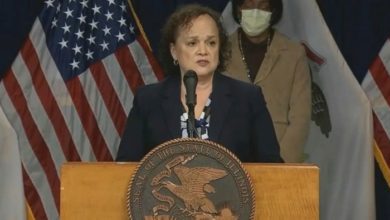Inflammatory disease in children could be related to COVID-19

Worldwide cases of COVID-19 topped 4 million this week, concern is mounting as very small clusters of children have shown adverse responses to fighting off COVID-19.
As many as 93 children have presented in New York with a new pediatric multi-system inflammatory syndrome, likely linked to COVID-19 — and five children may have died of the condition.
Some children are also experiencing Kawasaki-like symptoms and COVID Toes.
The three conditions can present at different times during the COVID-19 infection, according to Christie Clinic’s Dr. Jeanelle Murphy.
COVID Toes, causing the toes to turn a purple or red color, could be an early signal of a COVID-19 infection.
“They don’t cause any symptoms like any pain or anything, but some people have complained of pain,” Murphy said.
While medical professionals aren’t certain what is causing COVID Toes, they are witnessing symptoms that are in line with inflammation that causes blood clots.
Murphy said doctors are thinking “it’s like micro clots or clots in the small blood vessels on the toes.”
COVID Toes may be a symptom that signals it’s time to have a child tested for COVID-19.
Murphy said that children, known as “super spreaders,” remain in the group least likely to present with symptoms of COVID-19. Those who do have symptoms, are most likely to present with fever, dry cough and shortness of breath.
Children, though, are more likely to also have symptoms of diarrhea and vomiting associated with COVID-19.
According to the CDC, only 1.7-percent of children worldwide present with symptoms.
But concern is growing over very small clusters of children who have been hospitalized or died from complications believed to be associated with COVID-19.
Many of the children have tested positive for COVID-19 or had the antibodies.
At least 11 states are reporting that children are not presenting with typical COVID-19 symptoms. Instead, children of all ages are experiencing rashes, swollen neck glands, cracked lips, swelling of hands and feet, and redness in both eyes (conjunctivitis or red eye).
Because children have presented with symptoms not in line with those thought to be the hallmark COVID-19 symptoms, the New York State Dept. of Health is working in partnership with the CDC to develop national criteria to help medical professionals identify, track and respond to help children exhibiting symptoms.
Christie Clinic’s Dr. Jeanelle Murphy said that while there is still much to learn, and that the CDC is studying it. This development is something parents should pay attention to.
“They haven’t officially said this is due to COVID-19, but it’s very likely, and they’re studying it further,” Murphy said. “So most of the kids tested positive for either COVID, RNA (COVID genetic material) or they’ve had COVID antibodies; some positive, but not all of them.”
Originally, it was thought that COVID-19 would most likely adversely affect those over 65 or with underlying health conditions. But now medical professionals are concerned because the children who have been reported to have the new pediatric multi-system inflammatory syndrome did not have secondary conditions.
The pediatric multi-system inflammatory syndrome or Kawasaki-like symptoms are more likely to present after a child has run its course with COVID-19, many times going symptom-free.
“Whether or not the kiddo has symptoms, they could go on to develop the pediatric multi system inflammatory syndrome weeks later,” Murphy said. “So, the thought is that if this syndrome is due to COVID-19, it’s not directly a result of the virus, but rather the immune response to the virus.
“It’s basically the immune system kind of going crazy after the infection has resolved. So they often aren’t acutely infected, it’s the immune system later on kind of attacking itself.
“The immune system is basically attacking these kids’ blood vessels and hearts.”
The result has been death due to heart failure in some of the children.
Murphy said it is not unusual for a child’s or young adult’s immune system to overreact to infection; this is why children often spike a fever if they have an infection, even a cold.
A surge in strokes among adults in their 30s and 40s has caused additional concern in how inflammation associated with COVID-19 affects the body’s ability to respond.
While an adult’s immune system can handle infection better than a child’s, younger adults have a higher immune response than older adults. This causes high amounts of inflammation.
“The inflammation leads to the blood clotting,” Murphy said.
“These young people with COVID-19, they’re getting large clots in large arteries in the brain which is taking out a good portion of the brain function.
“So there’s severe strokes that we normally do not see in people in their 30s and 40s. But since COVID has come into play here, we’re seeing a lot more strokes in young people.”
Murphy said that there is still much to be learned about the novel virus.
In the early days of learning about the virus, it was compared to the flu, but Murphy said COVID-19 is “definitely a lot worse than the flu.”
Without a vaccine, the mortality rate of COVID-19 is five times that of the flu.
She added that no one knows about what immunity to COVID-19 looks like. Murphy does not recommend purposely exposing a child to COVID-19 in hopes of building immunity.
“We don’t even know if everybody is going to develop immunity to it, we’re just starting to do the antibody testing,” Murphy said. “Because we don’t understand what the immunity of COVID-19 really means, is it just seasonal; is it life; is that a few years; I do not recommend purposely infecting kids. I think that could be really dangerous.”
A mother, Murphy said that she understands how hard it is to keep children socially distanced, but that adhering to the stay-at-home order and keeping children protected is the best practice.
“It goes for all ages. It’s not just adults,” she said.
“Right now kids really shouldn’t be within six feet of anybody without a face covering with anybody other than their family with whom they live.
“I think we definitely need to be social distancing as much as we can.”





